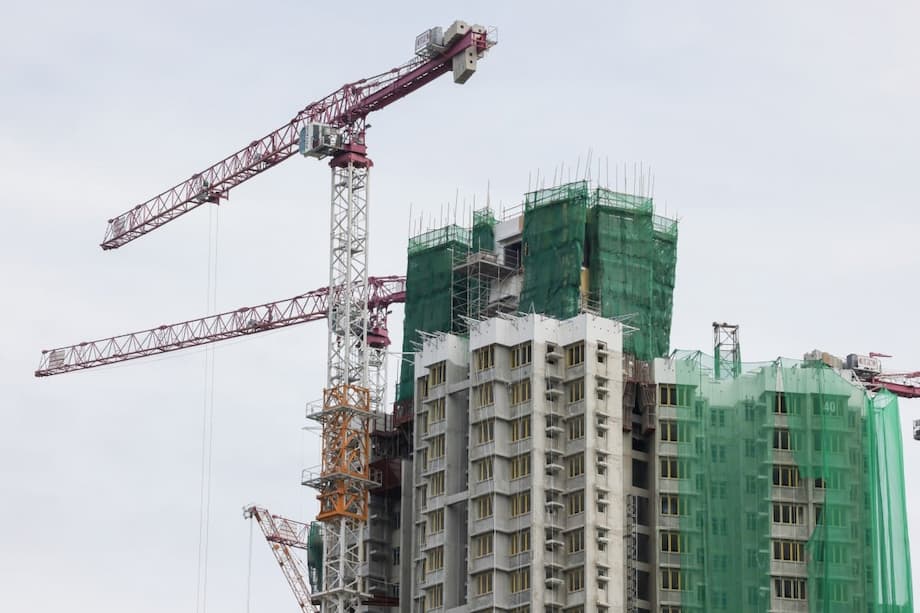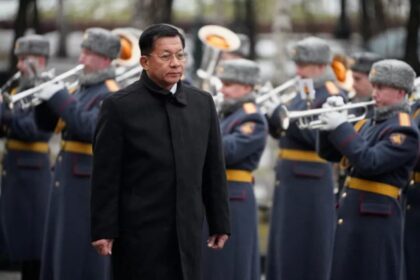A rare retreat in a scheme built for speed
For the first time since Hong Kong launched its Land Sharing Pilot Scheme (LSPS), a private developer has withdrawn an application. Brasilia, a subsidiary of Lee On Investment (Holdings), pulled back earlier this year from a 3.1 hectare proposal in Yuen Long that had aimed to deliver more than 2,000 homes. The move was not announced by the government, but it is recorded in official documents. It arrives at a moment of weak housing sentiment and slower economic growth, and it leaves only six other applications on the table under the pilot.
The LSPS was created to turn underused private farmland into housing faster by aligning developer incentives with the city’s public housing goals. In simple terms, a landowner can seek permission to build at a higher density in exchange for reserving the bulk of the added floor area for affordable public sector units. The government backs that bargain with commitments to provide enabling infrastructure and to speed up planning and development approvals.
This withdrawal underscores a tension at the heart of the experiment. Developers are asked to commit to a large public housing share and to navigate complex approvals, all while the market cycle is soft and financing costs remain uncertain. Some industry voices have long questioned whether the numbers add up for private firms in the current climate.
Wendy Hong Wen, who sits on the Legislative Council development panel, has been outspoken about the incentive problem that builders face under the pilot.
“The scheme’s conditions were never attractive, as developers could only break even rather than make a profit, even in a stable economic climate.”
That view captures why an early withdrawal matters. It signals caution among landowners who might otherwise contribute sites under the pilot. It also spotlights a policy question for the administration: whether the balance of obligations and benefits is calibrated to bring private capital into projects that deliver a large share of public homes on a compressed timetable.
How the land sharing model works
The LSPS targets privately held agricultural or other low density land where higher intensity housing could be viable with new roads, drains, and community facilities. A proponent submits a package seeking to increase the plot ratio, which is the ratio of gross floor area to site area. At least 70 percent of the increased floor area must be set aside for public sector housing, such as public rental housing or subsidised sale flats. The remaining floor area forms the private component, which the developer can sell on the open market.
In return, the government agrees to deliver infrastructure that unlocks higher density and to coordinate approvals across departments. That includes earlier and more predictable engagement with the Town Planning Board, the Lands Department, and utilities. The pilot, in other words, aims to trade public infrastructure and speed for a large tranche of public homes and a smaller portion of private units on the same site.
The model does not eliminate core project risks. Landowners still need to resolve statutory planning issues, pay land premium to convert agricultural land to residential use, satisfy technical requirements on transport and drainage, and manage construction risk. Even with a faster path, the timeline from application to first keys can be long for New Territories sites, which is a material factor when interest rates are elevated and sales are slow.
Why are developers cautious now
Several forces have reshaped housing economics in the city. Selling prices have cooled in many districts, loan costs are higher than the last low rate era, and construction inputs have become more expensive. Projects that tie up capital for years with limited profit visibility struggle to clear internal return hurdles or satisfy lenders. In that environment, a scheme that reserves a large share of incremental floor area for public units can be a hard sell unless other parts of the equation tilt decisively in favor of faster, lower risk delivery.
Under the pilot, the private component is the developer’s revenue engine. The public share typically generates little or no profit. That places more weight on two variables that developers do not fully control: the land premium payable to convert agri land to housing, and the time it takes to secure rezoning, site formation, and utility upgrades. Delays erode value through holding costs. Uncertainty around premium and approvals weakens the investment case.
Cash flow timing also matters. Many builders rely on presales to fund construction. Pre sale consent is a mandatory gate in Hong Kong, and applications can only be approved once key conditions are met. Even when the government promises faster processing, new greenfield estates in the New Territories often face technical constraints that can slow early phases. The result is a longer wait before sales revenue arrives, which pushes up financing needs.
Developers have responded by focusing on balance sheet strength and by pacing new commitments. Some large groups have emphasized capital management, including share buybacks and selective land bidding, which signals an appetite to conserve cash rather than launch projects with uncertain returns. A pilot that depends on private participation must compete with these other uses of capital.
Inside the Yuen Long proposal
The withdrawn application covered about 3.1 hectares on the fringe of Yuen Long in the New Territories. Materials tied to the proposal pointed to more than 2,000 units at full build out, a scale that would have required mid rise to high rise blocks and upgrades to transport and utilities. The area is a patchwork of villages, brownfield activities, and farms. Planning such conversions demands careful phasing to manage traffic, drainage, and community facilities.
Under the pilot, the government would have been responsible for enabling works that make higher density feasible. That usually means new access roads, drainage capacity, and public amenities that can support a larger population. Given the seventy percent rule for public sector housing, the project could have made a visible contribution to the city’s affordable housing pipeline if the numbers held together for the private proponent.
What it means for housing supply
One withdrawal does not define a policy. Yet participation in the LSPS has been modest since launch, and the first retreat suggests the current mix of obligations and benefits may not be sufficient for many landowners. If applications remain sparse, the pilot will struggle to unlock significant volumes of public homes on private land in the short term.
The city still needs a steady stream of affordable units. Public sector production from government led new development areas, estate redevelopments, and other land assembly tools remains the backbone of supply. Those paths can proceed without private partners, though they require substantial public works and longer lead times. The pilot was intended to complement that effort by mobilizing privately controlled sites. The latest development may prompt a review of how best to combine both tracks to hit housing targets.
Money and approvals, the cost side of the equation
Feasibility hinges on a sequence of regulatory and financial steps that can be challenging for greenfield projects. Converting agricultural land to residential use requires payment of land premium, a negotiation that can be lengthy and material to project returns. Developers also face rates, fees, and stamp duty on instruments tied to land and property deals. The Inland Revenue Department explains the scope of stamp duty, reliefs, and procedures for property and tenancy documents on its website. For details, readers can consult the IRD page on stamp duty procedures at ird.gov.hk.
On the sales side, presales are vital to cash generation. Hong Kong requires pre sale consent before uncompleted units can be sold. The Lands Department publishes monthly and quarterly updates on consents issued, pending, and withdrawn, which offer a window into market momentum and the pace of approvals. The department’s reports can be found at landsd.gov.hk.
Beyond approvals and taxes, legal and administrative workflows run through the Land Registry and multiple bureaux. Title checks, assignments, mortgages, and releases are standard tasks that add time and cost. The LSPS was designed to compress timelines by coordinating agencies and by committing public works in parallel. Even so, complex sites in the New Territories often require layered solutions in transport, drainage, and community facilities before housing can proceed at higher density.
What policy tweaks could revive interest
Policymakers can target the specific friction points that depress returns or slow timelines. Faster and more transparent land premium assessment would reduce one of the largest uncertainties. Standard playbooks for off site works, clear milestones, and guaranteed windows for statutory steps would lower holding costs. Early investment in key road and drainage links can also make a decisive difference for candidate sites.
Incentive design can be adjusted while preserving the public mission. Allowing a slightly larger private component on sites that are less connected, permitting phased handover of public units, or piloting shared infrastructure funds could improve cash flow during construction. Dedicated financing tools, such as low cost loans tied to project milestones or government backed infrastructure bonds for LSPS sites, would help developers meet hurdle rates without diluting the public housing share.
Site selection and phasing matter. Proposals near existing rail and utilities are more likely to work under current rules. Applications in areas that demand heavy upfront works may require tailored arrangements, or they may be better delivered through government led land assembly and resumption.
Lessons from other housing drives
Housing programs around the world face similar pressures. When the public sector relies on private partners to deliver affordable homes, the math must be credible and the timetable predictable. If approvals slow or costs spike, participation falls. Effective oversight, clear rules, and transparent progress reporting help sustain support from both investors and the public.
For Hong Kong, the practical course is to keep private participation where it works best and to lean on public delivery where market incentives are too weak. A blended approach, with the pilot applied to sites ready for near term activation and government led works taking on more complex areas, can still expand supply while the market adjusts.
Key Points
- A private developer, Brasilia under Lee On Investment, withdrew an application to the Land Sharing Pilot Scheme, the first retreat since the pilot began.
- The application covered 3.1 hectares in Yuen Long and envisaged more than 2,000 homes.
- Under the pilot, at least 70 percent of added floor area must be allocated to public sector housing in exchange for higher density and faster approvals.
- Lawmaker Wendy Hong Wen argued the terms are not attractive, saying developers often only break even even in a stable economy.
- The withdrawal highlights weak developer appetite amid soft sales, higher financing costs, and long approval timelines.
- Key cost drivers include land premium negotiations, stamp duty and fees, and the timing of pre sale consent, which affects cash flow.
- Policy options include faster and clearer land premium assessment, standardized infrastructure playbooks, milestone based financing, and calibrated private shares for more challenging sites.
- Government led land assembly and new development areas remain central to public housing supply, with the pilot intended to complement that effort.












